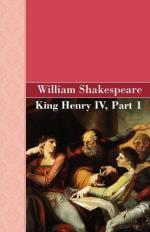|
This section contains 4,367 words (approx. 15 pages at 300 words per page) |

|
SOURCE: Findlay, Heather. “Renaissance Pederasty and Pedagogy: The ‘Case’ of Shakespeare's Falstaff.” Yale Journal of Criticism 3, no. 1 (fall 1989): 229-38.
In the following essay, Findlay evaluates the figure of Falstaff with reference to classical models and contemporary theory regarding economic exchange, pedagogy, and homoeroticism.
Although I hope to inspire a little healthy suspicion about the nature of Sir John Falstaff's tastes when it comes to pleasures of the flesh, this paper will not argue that if one reads between enough lines in Shakespeare's Henriad, or beyond enough layers of heterosexist commentary on his character, the jolly old knight will reveal himself as a sodomite. Although there are several obviously homosexual characters in Renaissance drama, Falstaff is not one of them. Falstaff is the “case study” for this paper rather than, for example, Christopher Marlowe's homosexual Edward II, because Shakespeare uses Falstaff as a figure for several sexual questions which...
|
This section contains 4,367 words (approx. 15 pages at 300 words per page) |

|


